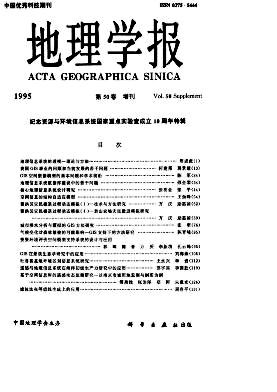Fan Xipeng, Huang Wensen
Fuzhou is located in a structural basin controlled bv neofaults. The basement of it is consisted of Mesozoic granite, and Quarternary sediment which is 30- 60m thick. The NNW torsional and tensioned fault zone which extends throughout the middle part of the basin has rich of geothermal water. It is calculated according to heat balance that the thermal water discharged from the fault zone to the Quaternary system is 251. 6× 10 ̄4m ̄3/a (80- 85℃). At present, part of the thermal water is extracted from the fault zone of granite and the left is extracted from the overlying upper Quaternary aquifer.From early 1960s to early 1990s, in extraction well concentrated area in the Fuzhou geothermal water field, the piezometric level of granite fault zone water has a decline of 15 - 35m, and the piezometric level of Quaternary aquifer has a decline of 10- 20m.Before the geothermal water is extracted at a large scale," water hill" formed along the discharge zone of geothermal water controlled the movement of shallow groundwater in the middle part of Fuzhou basin. With the increase of exploitation intensity, the "water hill" became smaller and smaller. Till late 1980s, the "water hill" was replaced by a developing cone of depression. The change of hydrodynamic field not only indicates that the shallow groundwater is exhausting, but also makes shallow water temperature decline. The monitoring data has shonw that, during 1984- 1991, in the shallow part of the geothermal water field, the decline rate of water temperature is 1.14 - 1. 38℃ /a in the centre of depression cone, and is about 0. 42℃/a at edge of cone of depression.Another problem is the deterioration of water quality in Fuzhou. Because of the longterm exploitation, the geothermal water and the associated normal temperature groundwater have produced a water quality variation. It mainly appears to be the increase of total dissolved solid (TDS). Because different groundwater runoff systems have different geochemical backgrounds, the TDS increasing process is different also.In the northern runoff system, the yearly increase range of TDS is less than 5mg/1, and the increase rate of HCO3 ̄- ion is the same as of TDS, but the contents of Cl ̄- and SO4 ̄2- ions have a decreasing trend. These indicate that, after the cone formed , the intensity of runoff which is from the north to the south is increasing and the carbonate lixiviation is speeded up.In the southern runoff system, the hydrogeochemical characteristic is completely different from that of the northern runoff system. The Quaternary aquifer is semi-enclosed and has a genetic relationship with ocean water. Under the exploitation, the general water quality evolution trend in the southern runoff system is as follows. The contents of CI ̄-、SO4 ̄2-、 and Na ̄+ ion have a continue increase, but the content of HCO3 ̄- ion has an obvious decrease, and the variation of TDS is the same as that of Cl ̄-、SO4 ̄2-、and Na ̄+ ions.Cl ̄-and Na ̄+ ions are dominant in the southern runoff system.Their increase also reflects, under condition of exploitation, the strengthening of runoff-lixiviation process in the ingression influnced paleoalluvium. Except the expense of HCO3 ̄- by nitrity action of ammonia , the HCO3 ̄- ion content in ground water is controlled by partial pressure of CO2 In the semi-enclosed groundwater system, both the decrease of hydraulic pressure and the increase of runoff intensity caused by well exploitation are possible factors to make the partial pressure of CO2 declined and to produce decarbonation action.In the area with well group concentrated according to leveling surveys in 1967 and 1986, the area with ground subsidence values larger than 150mm was about 2. 6km ̄2, and in central area the ground subsidence value was 313-414mm. The ground subsidence volume is closely related to the range of piezometric level decline.The main compressed layers that caused the ground subsidence are marine sludge and muddy soils which are 20- 40m thick. In most part of the geothermal water field, they contact directly with
